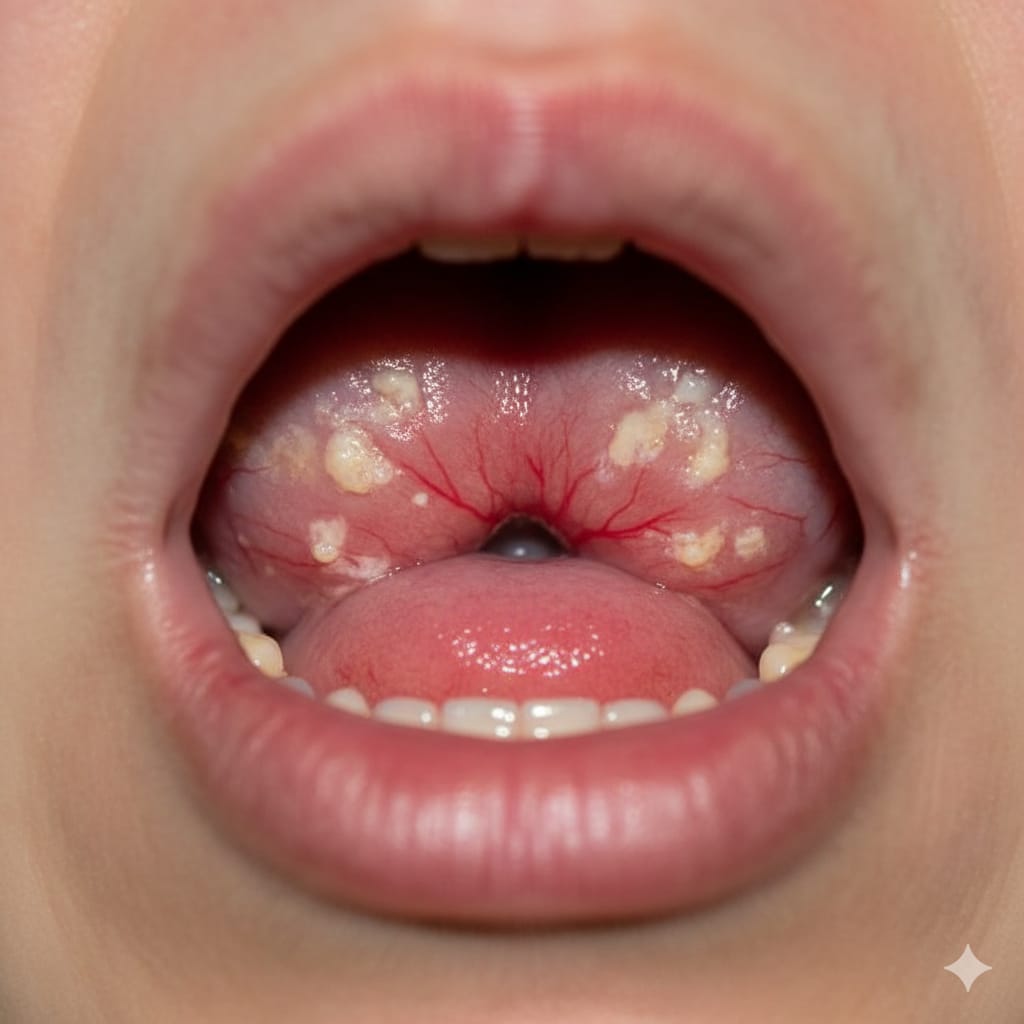Pharyngitis is one of the most common throat problems affecting people of all ages worldwide. It is often referred to as a “sore throat” in everyday language. The condition can be mild and self-limiting, but in some cases, it may indicate a bacterial infection that requires medical treatment. Since pharyngitis can interfere with eating, swallowing, and speaking, understanding its causes, symptoms, and treatment options is important for maintaining overall health.What is Pharyngitis

What is Pharyngitis?
Pharyngitis is the medical term for inflammation of the pharynx, the back of the throat that lies behind the mouth and nasal cavity. When the pharynx becomes inflamed, it leads to discomfort, pain, and irritation, commonly known as a sore throat.
The condition can be acute (sudden onset, lasting less than 2 weeks) or chronic (persistent or recurrent sore throat lasting more than a few weeks). Most cases are caused by viral infections, but bacteria such as Streptococcus pyogenes can also be responsible.
Types of Pharyngitis
Pharyngitis can be classified based on cause and duration:
- Acute Pharyngitis
- Sudden onset, usually caused by viral or bacterial infections.
- Symptoms typically resolve within 7–10 days.
- Common in children and young adults.
- Chronic Pharyngitis
- Long-lasting sore throat, often due to irritants such as smoking, pollution, allergies, or repeated infections.
- Patients may experience recurring symptoms.
- Viral Pharyngitis
- The most common type, caused by viruses like rhinovirus, adenovirus, influenza, or coronavirus.
- Generally mild and self-limiting.
- Bacterial Pharyngitis
- Caused mainly by Group A Streptococcus (GAS).
- Can lead to complications like rheumatic fever or kidney inflammation if untreated.
- Requires antibiotic therapy.
- Allergic or Irritant-Induced Pharyngitis
- Caused by exposure to allergens, smoke, pollution, or chemical irritants.
- Often chronic in nature.
Causes of Pharyngitis
The causes of pharyngitis can vary depending on the type. Some common causes include:
- Viral infections – Common cold, influenza, adenovirus, Epstein–Barr virus (causing mononucleosis).
- Bacterial infections – Group A streptococcus (strep throat), Neisseria gonorrhoeae, Corynebacterium diphtheriae.
- Allergies – Dust, pollen, animal dander, mold.
- Irritants – Smoke, pollution, chemicals, dry air.
- Gastroesophageal reflux disease (GERD) – Acid reflux irritating the throat lining.
- Overuse of voice – Excessive shouting, singing, or talking.
- Weakened immunity – Making individuals prone to frequent throat infections.
Risk Factors
- Certain individuals are more likely to develop pharyngitis:
- Children and teenagers (more exposed to infections in schools).
- People with weak immunity.
- Smokers and alcohol consumers.
- Those exposed to air pollution or occupational irritants.
- Individuals with allergies or chronic sinus problems.
Symptoms of Pharyngitis
The symptoms of pharyngitis can range from mild to severe depending on the underlying cause. Common signs include:
- Sore throat (pain, scratchy or burning sensation).
- Difficulty swallowing (dysphagia).
- Redness and swelling in the throat.
- Swollen lymph nodes in the neck.
- Fever and chills (more common in bacterial cases).
- Headache and body aches.
- Cough and runny nose (common in viral cases).
- Hoarseness of voice.
- Pus or white patches on tonsils (sign of bacterial infection).
- Fatigue and loss of appetite.
Complications of Pharyngitis
While most cases are mild, untreated bacterial pharyngitis may cause serious complications:
- Rheumatic fever – Can damage heart valves.
- Glomerulonephritis – Kidney inflammation.
- Peritonsillar abscess – Collection of pus near tonsils.
- Otitis media – Middle ear infection.
- Sinusitis.
- Scarlet fever.
Diagnosis of Pharyngitis
Diagnosis involves a combination of medical history, physical examination, and diagnostic tests.
- Medical history – Doctor asks about onset, symptoms, exposure to infections, and risk factors.
- Physical examination – Throat inspection for redness, swelling, pus, or exudates.
- Rapid antigen detection test (RADT) – Quick test to detect Streptococcus pyogenes.
- Throat culture – More accurate test for bacterial infection.
- Blood tests – In chronic or severe cases to detect viral infections like mononucleosis.
Treatment of Pharyngitis
The treatment depends on the underlying cause:
- Viral Pharyngitis Treatment
No antibiotics required.
Symptomatic management includes:
- Rest and hydration.
- Warm saline gargles.
- Lozenges or throat sprays.
- Paracetamol or ibuprofen for pain and fever.
- Humidifiers to moisten dry air.
- Bacterial Pharyngitis Treatment
- Requires antibiotic therapy.
- Penicillin or amoxicillin is usually prescribed.
- For penicillin allergy: azithromycin or cephalosporins may be given.
- Completion of full antibiotic course is essential.
- Chronic Pharyngitis Treatment
- Identify and remove irritants (smoking, dust, allergens).
- Manage GERD with medications and lifestyle changes.
- Regular hydration and throat soothing remedies.
Home Remedies for Pharyngitis
For mild cases, natural remedies can ease discomfort:
- Warm salt water gargle – Reduces swelling and kills bacteria.
- Honey and warm water/tea – Soothes throat irritation.
- Ginger tea – Has anti-inflammatory properties.
- Turmeric milk – Acts as a natural antiseptic.
- Steam inhalation – Relieves congestion.
- Resting the voice – Prevents strain on throat muscles.
Prevention of Pharyngitis
Simple preventive measures can reduce the risk of pharyngitis:
- Maintain good hygiene – Wash hands frequently.
- Avoid close contact with infected individuals.
- Do not share food, drinks, or utensils.
- Use masks during cold and flu season.
- Strengthen immunity – Balanced diet, regular exercise, adequate sleep.
- Avoid smoking and secondhand smoke.
- Use humidifiers in dry environments.
Pharyngitis
Sore throat causes
Pharyngitis symptoms
Pharyngitis treatment
Viral pharyngitis
Bacterial pharyngitis
Acute pharyngitis
Chronic pharyngitis
Home remedies for sore throat
How to cure pharyngitis
Complications of pharyngitis
